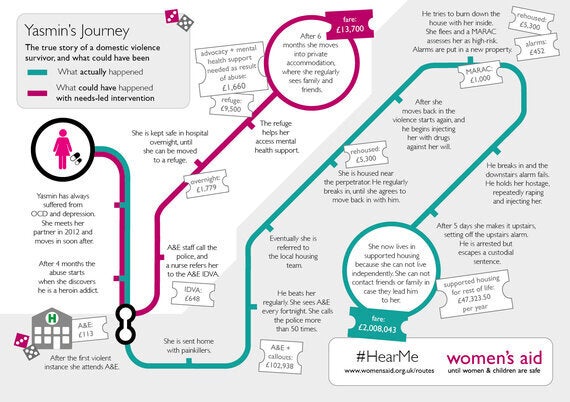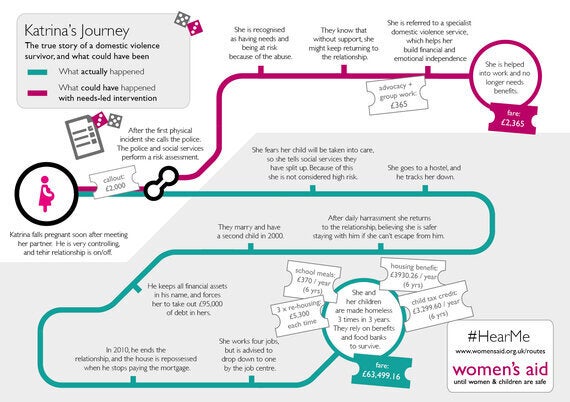One of the most important things we do at Women's Aid is listen to women's stories. Survivors of domestic violence all have a story to tell about their experiences, how they have felt, what they want for themselves and their children. For many women, when they first try to tell these stories, when they first disclose they are experiencing domestic violence, no one listens to them, and no one consults them about how to stop the abuse, despite the fact that nobody knows the perpetrator better than they do, and nobody better understands the resources - both internal and external - they have used so far.
Too often women who disclose abuse are assessed for risk, and then divided into categories: those at "standard" or "medium" risk are left to fend for themselves, or offered an hour of counselling a week with little support to escape their abuser. Those at high risk are offered intensive support to reduce their risk, often tied to a criminal justice process which they are pressurised to comply with, but little or no attention is paid to their long-term independence and wellbeing. Not surprisingly, many women struggle to escape the abuse permanently, build their independence, and get their lives back.
Our decades of experience working with these women, and the evidence of research, have taught us a better way. By listening to women, identifying their resources and their needs, and working with them to achieve the best possible outcomes for themselves and their children, we can provide help earlier and make sure its effects actually last.
Too often this approach is considered too complicated and too expensive. So to make it clearer, and to prove that it is the only effective way to respond to women and children experiencing domestic violence, we have decided to tell these women's stories. To show the difference a needs-led approach has made or could have made in real women's lives.
Yasmin's partner was extraordinarily violent: subjecting her to many violent attacks which sent her to hospital and the police repeatedly. After a final appalling assault and kidnapping, she has now moved into supported accommodation. Her pre-existing mental health problems, combined with the impact of the abuse, mean she will probably never live independently now. If the staff at A&E had assessed her for domestic violence and referred her to support which met her needs the first time she was beaten, she would probably be much more independent, and would not have suffered the awful violence she did.

Katrina was assessed as 'low risk' when she split from her partner after a violent episode after their daughter was born. Because she was offered no support, she returned to the relationship when he tracked her back to her new home and harassed her until she agreed to take him back. The financial abuse he subjected her to left her £95,000 in debt, and reliant on welfare payments to support herself and her child. Had her needs been recognised in that first assessment, she could have avoided the debt which consumes almost all of her income from her work, and supported into better paid employment.
Sarah was lucky in some ways: after being unsupported by the police and social services she attended a Women's Aid drop in afternoon. The worker there recognised her need for support, and the danger her then ex-partner posed to her and their three children. She was supported into a refuge and her children receive specialist support with their pre-school, which has a strong positive impact on the emotional and behavioural difficulties resulting from their abuse. Had she not gone to that drop-in, it is likely Sarah's children would have been taken into care. As a set of three children over the age of five, all with emotional and behavioural difficulties and the oldest child also diagnosed with autism, it is unlikely they would have been adopted. Most likely they would have spent their childhoods in care. Many children with similar experiences and without support suffer the consequences long into adult life. Thanks to the specialist intervention which really listened to their needs, Sarah and her children actually stayed together, and now have a happy independent family unit.
We have created some infographics, visualising these women's journeys, and the journeys they could have taken. These illustrate the enormous cost, in human and financial terms, of not listening to women and responding to their needs. We're going to keep advocating for a response to domestic violence that has women at its heart. Because we cannot just manage risk with domestic violence: we have to take action to end it.

This is not just about emotive words. At Women's Aid we are working with survivors to develop a new multi agency model of response to domestic violence and abuse, which shows how services can work together to build on women's resources, and understand and respond to their needs, working towards a shared goal of independence. It can be done. Things have to change.
